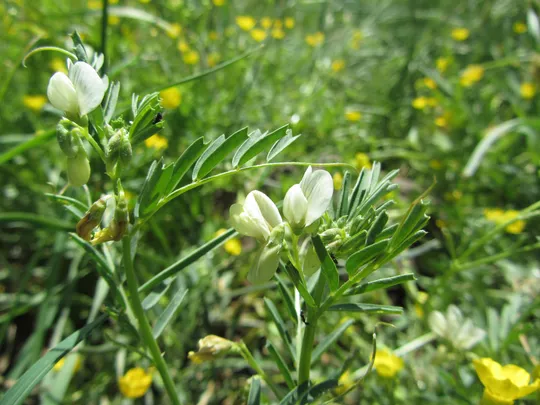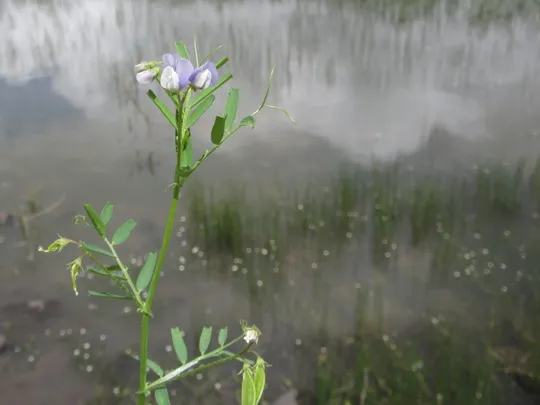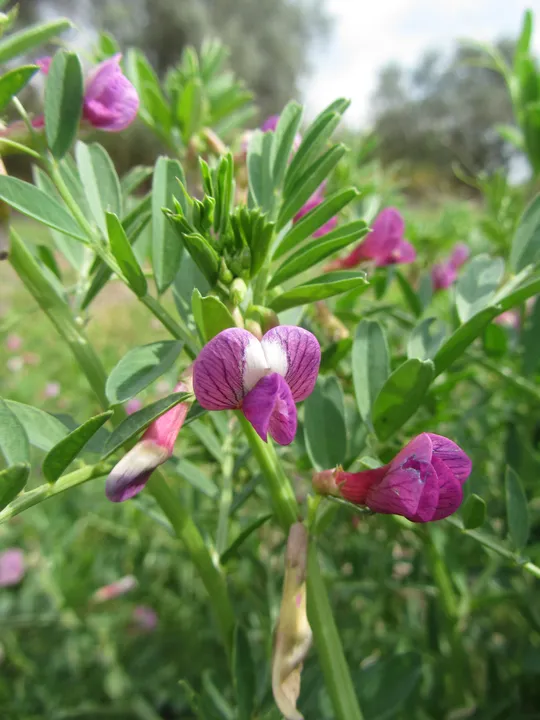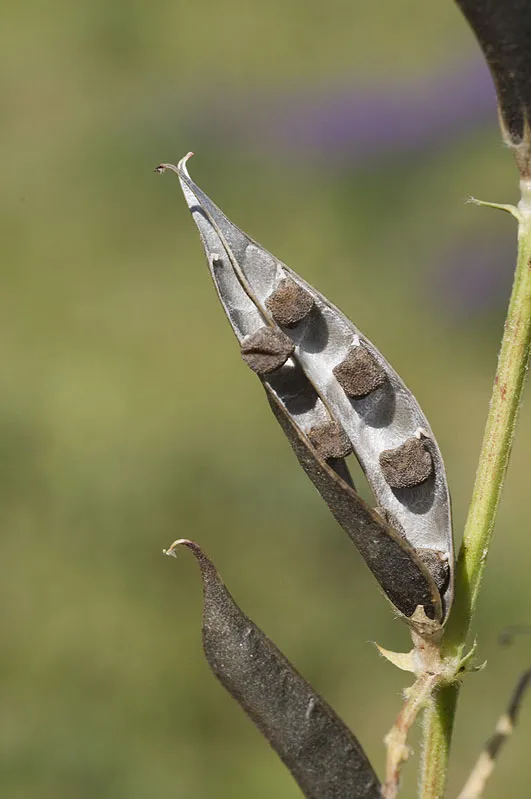Cypriot Vetch
Vicia cypria
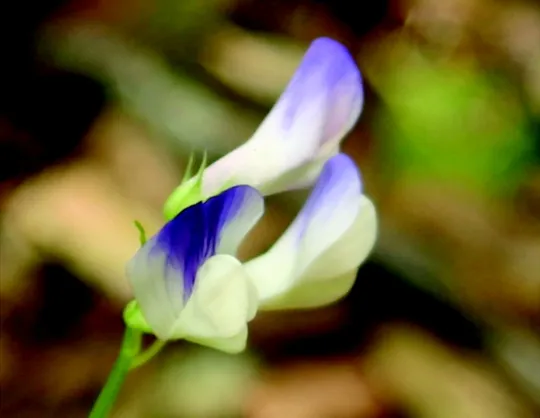
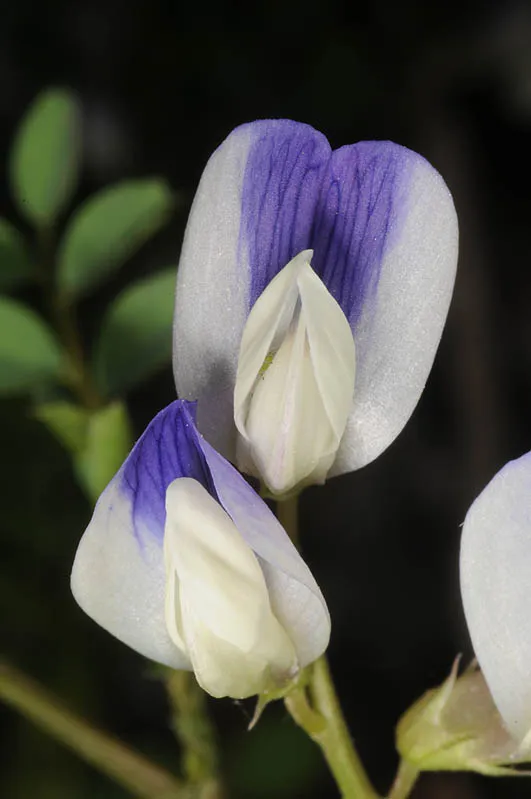
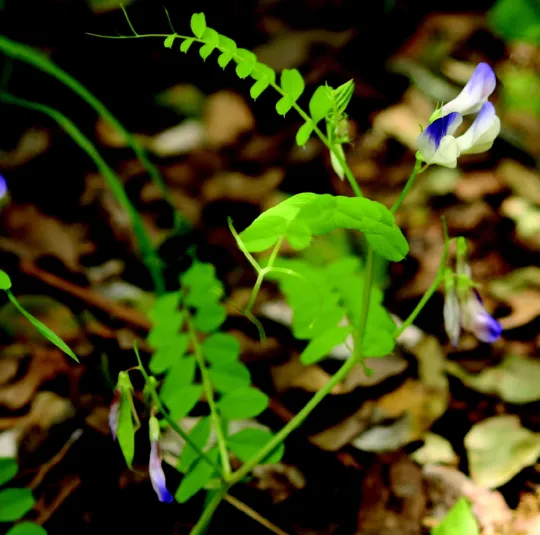
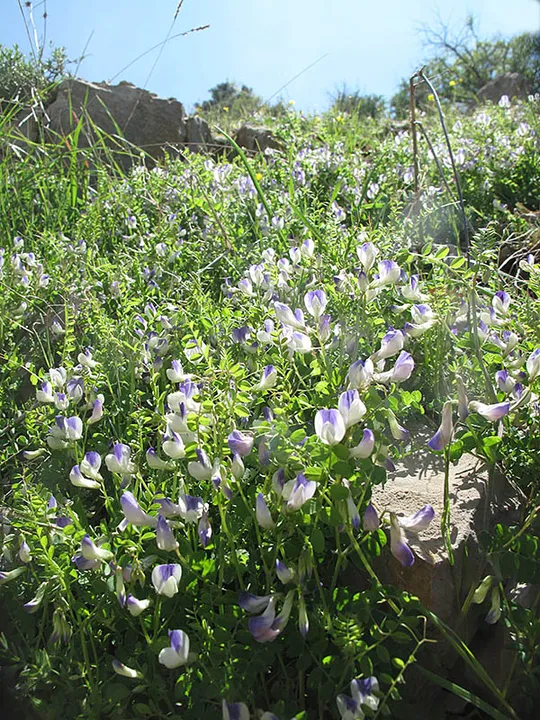
Vicia cypria grows only in the Upper Galilee in two geographic areas: Kfar Gil’adi (Wadi HaShomer, Niha Ruins) and Wadi Hatsor (Mount Evyatar, Mount Almon). There is a record from Mount Meron (Zeved Ruins and on the peak of Mount Meron) from 1964. Eliezer Smoli first collected V. cypria in Israel in Wadi HaShomer in 1925. On the Hermon, the species is rare and at the top of the Quercus calliprinos (the Palestine Oak) woodland and mountainous semi-steppe belt at altitudes of 1,100-1,500 meters. It is found there on moist northern slopes or in between moist shady rocks. V. cypria is common in humid ravines that descend to Wadi Ar'ar and in Wadi Si'on and in the Agas
Valley.
Woodland clearings, mostly on cool and humid northern slopes; occasionally in shrubland at the edge of woodlands.
For the genus, see Vicia basaltica.
The species is prominent thanks to its large bi-colored flowers. Its shape and flowers are similar to V. hibrida and V. sericocarpa, although they have few flowers, almost sessile and not on a long pedicel; moreover their flowers are only yellow, missing the bluish patch.
V. cypria belongs to a special biogeographic group of endemic plants in the eastern Mediterranean, whose distribution includes northern Israel, Cyprus and the Mediterranean zone in Lebanon and Syria, including the Amanus mountain range. Other species in this group include Acer obtusifolium (A. syriacum), Cytisopsis pseudocytisus, Gonocytisus pterocladus and the short leaved subspecies of Cedrus libani. The species of this group are characteristic of the humid Mediterranean climate and they are taxonomically close to typical Mediterranean elements.
The distribution of Vicia cypria is very limited and fragmented, on a global level as well. It is known in the Eastern Upper Galilee region, from the Hermon (Israel and Lebanon), from the Amanus ridge and from northern Cyprus.
• It is found exclusively in one region in Israel, but the few known sites are not grouped together.
• Currently only four sites with a total of 15-99 plants, are known in Israel, a very small number for an annual plant. The plants grow singly and have a limited distribution.
• The sites are far from settlements or roads. Access to them is relatively difficult and their habitat is not particularly sensitive to development.
• Most of the sites are included in nature reserves.
A repeat survey (the previous one was conducted in 1991) of the distribution of Vicia cypria in the eastern Upper Galilee from Metula to Safed and Mount Meron, should be conducted. The Wadi HaShomer and Mount Evyatar populations should be monitored. Grazing should be reduced in the Mount Evyatar area (particularly on Mount Almon).
Vicia cypria is endemic to the eastern Mediterranean: Cyprus, Israel, Lebanon and the Amanus Mountains in eastern Turkey. The species was first described from Cyprus. In Cyprus, V. cypria is restricted to the Kyrenia Mountain range in the north of the island, where it is very common at altitudes of 150-900 m; in Lebanon the species is known only from the western slopes.
Vicia cypria is very rare annual plant in Israel that grows only in the Upper Galilee in only four sites. Two of the populations once found on Mount Meron are probably extinct. The number of individual plants in Israel is very small as is the area occupied by V. cypria populations. The species is endemic to the Levant and the Galilee is its southern locus terminus.
Eig, A. & M. Zohary. 1939. Plants New for Palestine.(Vicia cypria) Palaestine J.of Botany, Vol. 1/3:311.
Current Occupancy Map
| 1000 squre meter pixel | 5000 squre meter pixel | 10000 squre meter pixel | |
|---|---|---|---|
| number of observations | 0 | 0 | 0 |
| in total pixels | 0 | 0 | 0 |
| Family | Fabaceae |
| Classification | On the endangered species list |
| Ecosystem | Mediterranean |
| Chorotype | Eastern Mediterranean |
| Conservation Site | Wadi HaShomer near Kfar Gil’adi |
| Rarity |
1
4
6
|
|---|---|
| Vulnerability |
0
1
4
|
| Attractiveness |
0
0
4
|
| Endemism |
0
3
4
|
| Red number |
1
4.2
10
|
| Peripherality | 0 |
| IUCN category | DD EW EX LC CR EN VU NT |
| Threat Definition according to the red book | Endangered |
 Based on:
Based on:
